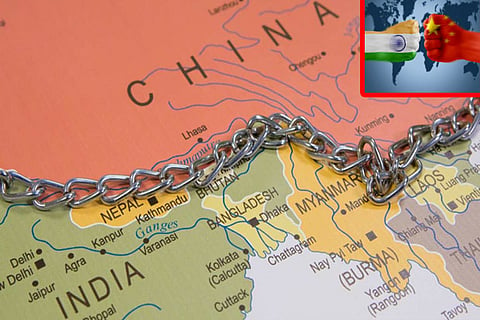

Chennai
The Global Times newspaper, generally regarded as the voice of the Communist Party, has charged India with illegally constructing defence facilities within Chinese territory in the Galwan region. The reference to defence facilities has led some to the conclusion that Beijing’s real issue is the roads that India has been laying in the region for better access to the LAC, something that the Chinese have already done. But Beijing’s motives are hard to decipher. The big question, of course, is whether this flare-up is a result of differing perceptions over the actual LAC or whether it has to do – as many experts suspect, with considerations that are much larger and more general.
In the face of a hardening attitude towards China over its perceived lack of transparency over reporting and containing COVID-19 in the early days of the outbreak, Beijing has resorted to some aggressive moves and some hard posturing on a variety of issues. On Tuesday, the Chinese President Xi Jinping asked the Chinese army to scale up battle preparedness, a remark that could be interpreted, in these inflamed times, at being aimed at India. Beijing’s assertiveness is showing in other places too.
In Hong Kong, it has proposed a new security law, which people feel could undermine the freedoms guaranteed under the ‘one country two systems’ agreement. In Taiwan, there are apprehensions over the deployment of two aircraft carriers, following Chinese Premier Li Keqiang’s call to reunify the two countries. What began with diplomats talking in an unusually tough language now seems to have manifested itself in military moves as well.
It is possible that Beijing feels the need to reassert itself in the face of COVID-19 accusations and gain leverage at a time when the world is combating the virus. As for India, Beijing is likely smarting under New Delhi’s decision to bar foreign direct investment under the automatic route; it is also uneasy over the steps taken to bifurcate Jammu and Kashmir into two union territories. While its motives may continue to be parsed, the important thing is for the two countries to dial down the tensions and prevent the situation from escalating further. While New Delhi should not be cowed down by threats and must meet Chinese aggression with firmness and resolve, it is imperative that cool heads prevail and that both countries work at the political and diplomatic levels to resolve the crisis.
Visit news.dtnext.in to explore our interactive epaper!
Download the DT Next app for more exciting features!
Click here for iOS
Click here for Android